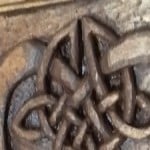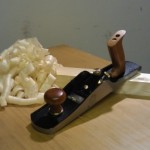Building a sawbench
Welcome! / Forums / General Woodworking Discussions / Building a sawbench
Tagged: Saw bench
- This topic has 63 replies, 12 voices, and was last updated 10 years, 11 months ago by
 Ron Harper.
Ron Harper.
-
AuthorPosts
-
Anonymous17 November 2012 at 11:52 pm #3388
My youngest daughter is dyslexic, but she certainly knows how to spell things out when it comes to playing war with her boyfriend 😀
Just about finished the Sketchup drawing, so should be able to post pic’s and the drawing together tomorrow 🙂
Anonymous18 November 2012 at 4:42 pm #3407A few progress shots from yesterday morning’s sawhorse build 🙂
Anonymous18 November 2012 at 4:55 pm #3414Well the last lot came through in a different order lol but at least we can see them 🙂
I’ve yet to sort the pictures showing the completed saw horse/bench, but they simply show the final trim (Legs trimmed to length, plywood braces in place and addition of the crotchet), plus cleanup of surplus glue prior to finishing with two coats of danish oil.
 18 November 2012 at 5:07 pm #3420
18 November 2012 at 5:07 pm #3420Hi Jesper
Thanks for the link I have just printed out the PDF sheets, I will ring the timber supplier in the morning I will try and get as close to the 1 3/8″ x 2 1/2″ and 1 3/8″ x 5″ as possible to save me having to rip boards to width.
Only difference I will screw and glue in place of nail and glue.
I live in the UK and have attended Paul’s Dovetail box , wall unit and Oak coffee table courses in Wales, attending the courses convinced me that hand tools was the way to go
Regards
David 18 November 2012 at 6:57 pm #3433
18 November 2012 at 6:57 pm #3433Most traditional sawhorses are taller than a proper saw bench which should come to the middle of your kneecap
Anonymous18 November 2012 at 7:30 pm #3435Much depends on the tradition/school in which you trained, as well as personal preference. 🙂 My saw horses tend to draw level with my knee @ 22″ in height, which also falls in line with a good step-up height if carrying out overhead work on site. Much higher and the saw horse can tend to be impractical for ripping/cross-cutting heavier timbers by hand.
Trestles on the other hand tend to be taller. 🙂
Anonymous18 November 2012 at 8:15 pm #3437Many thanks Ken This type of saw horse is extremely versatile, capable of withstanding heavy work loads and is far more straight forward to make than the one prescribed by Chris Schwarz. It also amounted to £2.36 for the leg timber, a dollop or three of poly glue, four nails and the top was made using a 36” long piece of scrap 6×2 joisting timber I had laying around, but could just as easily be made using floorboard scraps (The usual source when on sitework) or edge jointed 3×2, as well as new timber.
Quantities are;
36” = 6”x2”
144” (8’) = 3”x1.5”
1/2” Plywood @ 8” x 20”
Round or oval nails @ 2” x 4no
Exterior grade PVA (I used polyurethane glue)Most of the work is done once the halving joints are laid out and cut into the top to receive the legs and then it’s a case of offering the legs up to be marked and fitted.
 23 November 2012 at 8:55 pm #3759
23 November 2012 at 8:55 pm #3759Hi Guys
Using the Link Jesper posted for the Chris Schwarz saw bench I purchased enough PAR redwood from my local timber merchant to build two benches, The cost for the two benches was £22.10 a bit more than I think you guys in the US would have to pay. I have only built the one at present, it was a good project to hone my relatively new hand wood working skills, which by the way was brought about after attending Paul’s training courses in Wales. I have put far to much time and care in to building a saw bench but it is the fun of making it that I find satisfying. I will attempt to add a photo, this is my first post so not even sure that this will work
David


Hi David!
I’m happy you got inspired to build the bench 🙂
Looks like a very nice build, you will be able to enjoy it for many years to come.
Only problem is I get an even worse conscious about not completing my own 😉
Juryaan: Great that you got into this build aswell 🙂 Look forward to pictures!
Anonymous24 November 2012 at 7:35 am #3775Very nicely done David 😉
————-
I’d only make one recommendation for prospective future builds and that would be to also skew the legs toward the adjacent end of the horse. This method is illustrated in the pics I posted earlier and makes for a less “tippy” experience (Too much weight at one end whilst working and the saw horse can tip like a see-saw) and the saw still easily clears the legs during use. Plus it can safely be used as a hop-up if ever you’re doing overhead work such as architrave, shelving, picture rails, etc.. 🙂
-
AuthorPosts
- You must be logged in to reply to this topic.
